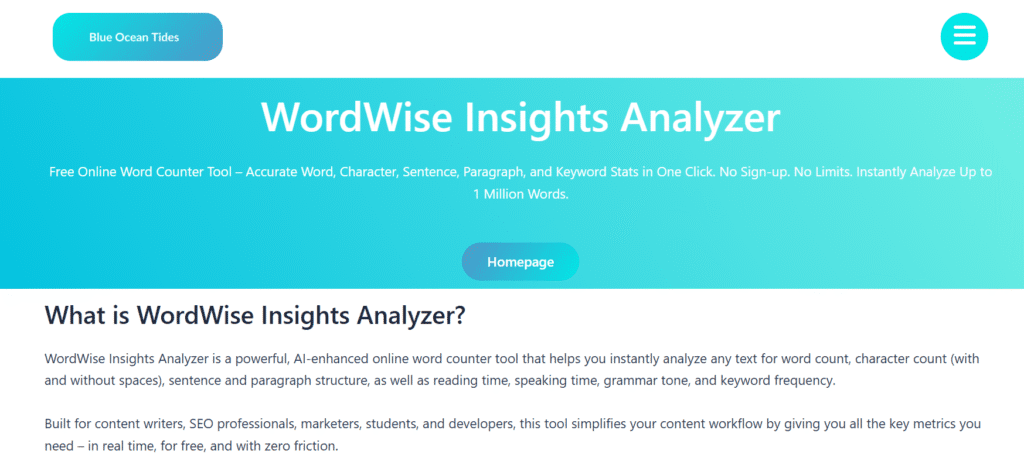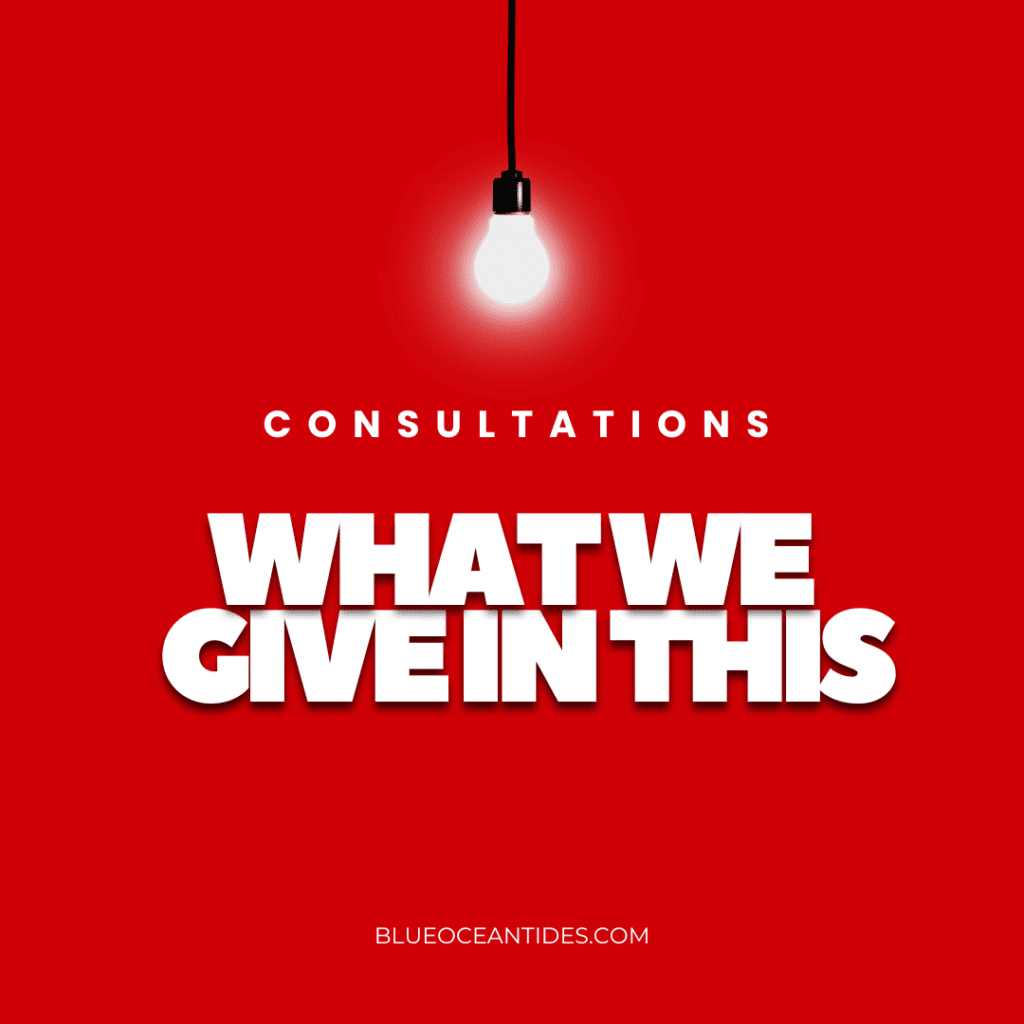Top Free Word Counters Compared 2025 | Accurate & Fast Tools
Whether you’re a student aiming to meet the Common App essay word count, a novelist tracking your word count per page, or a digital marketer optimizing content for SEO, knowing the precise number of words in your text is crucial. Word counters have become indispensable—no matter if you’re working on Google Docs, Microsoft Word, PDF documents, or even handwriting lines. In 2025, a new generation of word count tools is raising the bar. Today, we’ll break down the top free word counters, compare their features with examples and case studies, and introduce you to the latest innovation: WordWise Insights Analyzer—a powerful, free words counter tool. Ready to streamline your writing process and get accurate stats on every document? Try WordWise Insights Analyzer now—it’s free! Why Word Counters Matter in 2025 For Writers, Students, and Academics From counting the number of words in a short story, tracking the average chapter word count for a novel, or checking the 5-minute speech word count for a presentation, precision matters. Word counters take the guesswork out and provide instant feedback, helping you meet requirements and optimize flow whether you’re writing fiction, non-fiction, or academic papers. For Digital Marketers & SEO Every digital marketing expert knows that content length influences SEO. The right word count, keyword density, and semantic richness are crucial for ranking on Google. Tools like word counter online platforms and advanced analyzers such as WordWise give you an edge, helping you create content that’s reader-friendly and discoverable. For Everyday Users Google Docs and Microsoft Word are ubiquitous, but knowing how to check word count on Google Docs or how to show word count on Pages isn’t always straightforward. Free word count checkers and Chrome extensions make these metrics accessible, no matter your workflow. How Do Word Counters Work? Features & Functions Key Features in Modern Word Count Tools Word & Character Counts: Instantly calculates number of words, characters, and sometimes even sentences or paragraphs. Reading Time: Estimates how long it will take to read the content. Bulk Upload: Import multiple files (including PDFs and Word docs) at once. Keyword Density Analyzer: Useful for SEO, calculates the frequency of target keywords. Multi-language Support: Count words in Chinese, Spanish, and others. Privacy: Securely processes text, does not store content. Example: How to Check Word Count on Google Docs Open your document. Navigate to Tools > Word count (or use the shortcut: Ctrl+Shift+C). View the stats pop-up; for live updates, check “Display word count while typing.” Example: Counting Words in Excel Use the formula =LEN(TRIM(A1))-LEN(SUBSTITUTE(A1,” “,””))+1 for the cell A1. This counts the number of words in that cell. Case Study: A marketing agency compared word count results for client reports in Word, Google Docs, and WordWise Insights Analyzer. They found Google Docs undercounted hyphenated words compared to the online tool, which also supplied instant character and reading time breakdowns. Top Free Word Counter Tools Compared Comparison Criteria Accuracy (credible, consistent results) Features (beyond basic count) Ease of Use (interface, accessibility) Privacy & Security Integrations (browser, other software) Tool Name Unique Features Best For Free Limits WordCounter.net Keyword density, reading time, clean UI Students & writers No major restrictions CharacterCountOnline.com Instant char, word, sentence count Bloggers & marketers Fully free QuillBot Word Counter AI enhancement, integrated writing tools SEO & academics Free unless using advanced AI Zutrix Word Counter No upload limits, simple UX Copywriters 100% free PrePostSEO Word Counter Bulk uploads, PDF/Docs support Agencies, marketers Some premium features locked Semrush Free Word Counter SEO-powered insights, keyword suggestions SEO specialists Free for basic counts EditPad Word Counter Extra tools: grammar check, paraphraser Writers Free tools, limits for Paraphrase CountOfWords.com Sleek minimal interface, fast results Students Fully free PaperTrue Character Counter Simultaneous char & word stats, pro editor tips Academic writers No login required WordWise Insights Analyzer AI-powered analytics, deep SEO stats, privacy Advanced users, teams 100% free, no login needed Want to see a direct comparison? Try pasting 1,000 words into each tool—see which provides the features and data format you need for your workflow. In-Depth Reviews: Pros, Cons, and Standout Features 1. WordCounter.net Pros: Simple, clean, reliable. Shows top keywords. Cons: No bulk file support, Link! 2. CharacterCountOnline.com Pros: Fast, accurate, no login. Cons: Very basic, lacks analytics. Link! 3. QuillBot Word Counter Pros: Integration with AI writing suite. Cons: Ads can be distracting. Link! 4. PrePostSEO Word Counter Pros: Handles bulk and PDFs well, supports multiple formats. Cons: Some limits on additional tools like plagiarism checks. Link! 5. PaperTrue Pros: Tips for writers, extra editing advice. Cons: No bulk features. Link! 6. WordWise Insights Analyzer (NEW) Pros: AI-powered, real-time analytics, deep SEO metrics, privacy-first, visually accessible for screen readers. Free Online Word Counter Tool – Accurate Word, Character, Sentence, Paragraph, and Keyword Stats in One Click. No Sign-up. No Limits. Instantly Analyze Up to 1 Million Words. Try Now! Cons: As a new tool, fewer user reviews (so far). Content Gaps: What Most Reviews Don’t Cover Accessibility: Few top tool lists assess screen reader compatibility or support for visually impaired users. Developer Support: API and automation options often ignored. WordWise offers robust API docs. Accuracy Transparency: How does each tool count hyphenated words, headers, or text within images? Most reviews skip this aspect, but it impacts reliability. Data Privacy Policies: Many services process data remotely. WordWise Insights Analyzer deletes all input text after analysis (no databases). Bulk/Offline Use: Offline or downloadable free tools are rarely in comparison tables—a missed opportunity for privacy-focused users. Real-World Examples: Virtually no competitor includes testimonials or screenshots of actual workflows. WordWise Insights Analyzer: Revolutionizing Word Counting Experience and Authority As a digital marketing expert and professional SEO copywriter, I’ve tested dozens of word counters over the last decade. Many look similar, but few combine accuracy, privacy, and advanced analytics. Why WordWise Stands Out AI-Driven Analytics: Not just a basic words counter—it highlights keyword clusters, contextual SEO suggestions, and reading grade level. Privacy-First: Data is processed locally (or immediately deleted), reassuring agencies dealing with sensitive copy. Accessibility: Fully compatible with screen readers; high-contrast and dyslexia-friendly modes available. Free Forever: No gating, no ads, no sign-up required. Case Study: A copywriting agency automated word count checks for client deliverables, sync’ing results to Google Sheets





